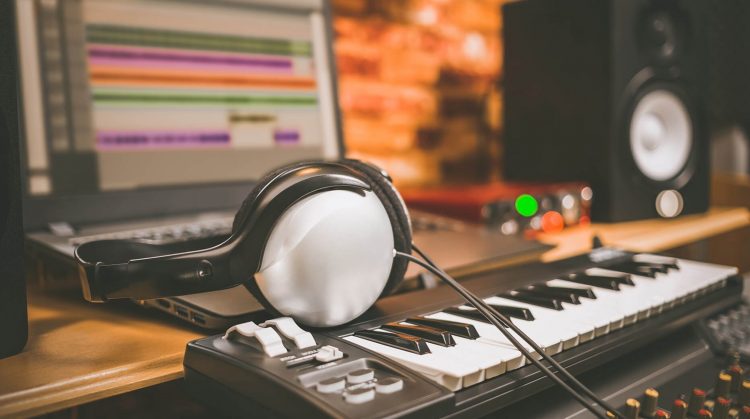
Mixing and mastering your own music can be very difficult. It requires mixing skills, knowledge of mixing equipment, and mixing techniques. In most cases, it’s easier and cheaper to choose online mixing and mastering. But if you want it to be all by yourself, this article is for you.
We have compiled a list of mixing tips to help you mix and master your own mixes!
- Create a mixing template in the mixing phase to make sure that everything is in its place. You need to concentrate on mixing, not organizing your project. Create sends with all types of reverbs and delays. Prepare some standard presets, for example, Sidechain compression preset. Also, you can prepare your master channel. A suggestion would be to put there one mastering compressor and limiter.
- Make a lot of automation when mixing your song — it will help you avoid some mixing issues and create an interesting soundscape for your listeners. Basically, you can do mixing using only eq and automatization, but this is not really comfortable to do. Automation can be used on volume, EQs, effects usage etc. It’s also helpful if you want to bring something more prominent at certain points during the mixdown or refocus attention where needed. You can automate almost anything with most DAWs (Digital Audio Workstation). There are different types of automation: linear, logarithmic curve, custom shapes etc., so do not hesitate to explore.
- Do not overuse compression while mixing. It’s one of the most common mixing mistakes. Compression can be used to control dynamics, but it’s easy to overdo it and make your mix sound squashed, lifeless, and boring. Try using compression on individual tracks sparingly and only if needed. Make sure that your gain reduction is not more than 10 dB.
- Keep an eye on each track’s frequency balance – use EQs (equalizers) to adjust the tone of each track so that they all work together cohesively. A good starting point is to apply a high pass filter (cut unwanted low frequencies) or a low pass filter (reduce high frequencies) on some or all of your tracks during the mixing phase. But never use more than 5 bands.
- Use panning effects wisely in order to create a spacious stereo image for your mixdown. Panning your tracks in different directions can help you create a space for each of them without making everything sound cluttered. Also, you can prevent frequency conflicts by panning some instruments in opposite directions. But your mix should be balanced in terms of panning. Left and Right speakers should be well balanced.
Part 2
- Limit the number of plug-ins used during mixing. Too many effects applied on one track may kill its dynamics and impact, so use only what is needed to get the job done if possible. Usually, it’s enough to use just 1-2 plugins on a track. For example SSL Channel Strip and DeEsser for vocals.
- Be careful when using reverb – it’s very easy to overdo it! Use reverb on individual instruments sparingly (to avoid muddiness) or group similar-sounding tracks together and apply an aux send/return effect with some global reverb/delay settings that will suit all tracks nicely while keeping their separate identities intact at the same time; this way you’ll be able to control how much reverb or delay each track will get.
- Listen to your mix with different types of speakers, headphones, and sound systems (club/car stereos). Not all mixing rooms are treated equally – you can change the acoustics of your room by putting up some bass traps or acoustic panels for example; these tools give you more control over how things sound in an untreated mixing space.
- Give your ears rest! Take a break after mixing for a while and come back to it with fresh ears. You will be able to hear things you didn’t notice before and make the necessary adjustments. Repeated loud music can anyway be stressful for our brain.
- Use professional mastering engineer service. If you are not sure how to master your music, it’s always a good idea to outsource this task to a professional mastering engineer. They will help you make your mix sound polished and radio-friendly. They can point some mistakes that you didn’t notice before.
Keep in mind that the most important thing is to experiment and find what works best for you – there are no set rules when it comes to mixing, so do not be afraid to try something new. It also takes a bit of time to get the hang of it.
Don’t forget that you can always make use of some online mixing and mastering services for consulting and they can also help you finish your mix. Trust the professionals, as they say.


